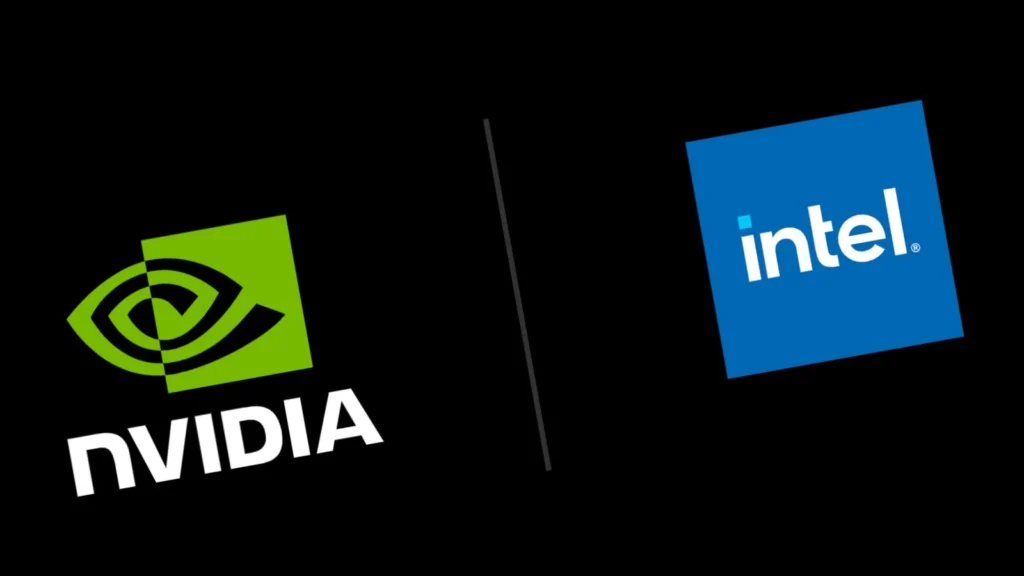In a landmark announcement, Intel and Nvidia have unveiled a collaboration that could reshape the PC gaming and computing landscape: Intel processors equipped with integrated Nvidia RTX graphics. This historic partnership brings together two giants of the computing industry, merging Intel’s leading CPU technology with Nvidia’s cutting-edge GPU architecture. The result is a single-chip solution designed to deliver high-end gaming, professional workloads, and AI acceleration without the need for a discrete graphics card.
A New Era for Integrated Graphics
Traditionally, integrated graphics have been viewed as suitable only for everyday computing tasks or casual gaming. Intel’s iGPUs, such as Iris Xe, have made notable strides in performance, but they still lagged behind dedicated GPUs when it came to gaming at high settings or handling professional workloads.
By integrating Nvidia’s RTX cores directly into Intel processors, the two companies are bridging this gap. Features that were previously exclusive to discrete GPUs, such as real-time ray tracing, AI-driven DLSS, and advanced shading, will now be accessible to a much wider audience.
What This Means for Gamers
Gamers are poised to be among the biggest beneficiaries of this collaboration:
- High-End Graphics Without a Discrete GPU: Many mid-range laptops and desktops may now deliver desktop-quality gaming experiences without needing a bulky Nvidia GPU.
- Ray Tracing on the Go: RTX features, including ray tracing, traditionally available only on high-end graphics cards, can now run on thin-and-light laptops.
- Improved Frame Rates with AI: Nvidia’s DLSS (Deep Learning Super Sampling) technology boosts frame rates while maintaining visual fidelity, making even demanding AAA titles playable on integrated hardware.
- Accessible Competitive Gaming: Gamers on a budget could now enjoy competitive titles like Fortnite, Valorant, and CS:GO with higher settings and smoother performance.
This partnership may redefine what “gaming-capable” PCs mean, especially for portable devices.
Empowering Content Creators and Professionals
Integrated RTX graphics are not just for gamers. Professionals and content creators will see a dramatic improvement in workflows:
- Faster Rendering: RTX cores accelerate rendering in applications like Blender, Cinema 4D, and Adobe After Effects.
- AI-Assisted Workflows: Nvidia AI cores enable accelerated image upscaling, denoising, and video editing features directly on the CPU-GPU hybrid.
- Compact, Efficient Workstations: Users no longer need a dedicated GPU to handle creative workloads, allowing thinner, quieter, and more power-efficient systems.
- Improved Productivity: Real-time ray tracing and GPU acceleration in productivity apps like AutoCAD and 3D modeling software can be achieved without expensive, discrete GPUs.
Technical Highlights
While Intel and Nvidia have not released full specifications, several expected features stand out:
- Integrated RTX Cores: Dedicated hardware for ray tracing, allowing realistic lighting, reflections, and shadows in games and creative applications.
- AI Acceleration: Support for DLSS and other AI-driven optimizations to enhance performance and image quality.
- Unified Memory Architecture: Potential use of shared memory between CPU and GPU for efficient data transfer, reducing latency.
- Power Efficiency: Merging CPU and GPU into a single chip reduces overall power consumption compared to separate discrete GPUs.
- Scalable Performance: Expected to be available in multiple configurations for desktops, laptops, and ultrabooks.
Potential Industry Impact
The implications of this collaboration are far-reaching:
- Laptop Market: Manufacturers could release gaming and creator laptops that are thinner, lighter, and more power-efficient, making high-performance computing more portable.
- PC Market: Mid-range desktops could deliver high-end graphics without the premium cost of discrete GPUs, helping alleviate the supply and pricing issues that have plagued the GPU market.
- Gaming Communities: Lower barriers to entry for advanced graphics will make PC gaming more accessible globally.
- Creative Professionals: Smaller studios and freelance creators can leverage high-performance graphics without investing in expensive workstation setups.
Challenges and Questions
Despite the excitement, some questions remain:
- Thermal Management: Combining high-performance CPU and GPU cores in one package will require effective cooling solutions.
- Performance Limits: While impressive, integrated RTX cores may not match top-tier discrete GPUs in raw power, especially for 4K gaming.
- Software Optimization: Developers will need to optimize applications and games to fully leverage this new hybrid architecture.
Nevertheless, early benchmarks and demos suggest significant gains over current integrated solutions, hinting at a bright future for hybrid CPU-GPU designs.
Conclusion
The Intel-Nvidia collaboration represents a historic step in PC architecture, merging the best of CPU and GPU worlds in a single chip. Gamers, creators, and professionals alike stand to benefit from enhanced performance, improved efficiency, and increased accessibility.
As this new generation of Intel processors with integrated RTX graphics hits the market, it could redefine expectations for gaming laptops, ultrabooks, and compact workstations, making high-end graphics and AI capabilities available to a much broader audience.
This partnership doesn’t just merge hardware; it heralds a new era of computing where performance, portability, and efficiency coexist seamlessly.




